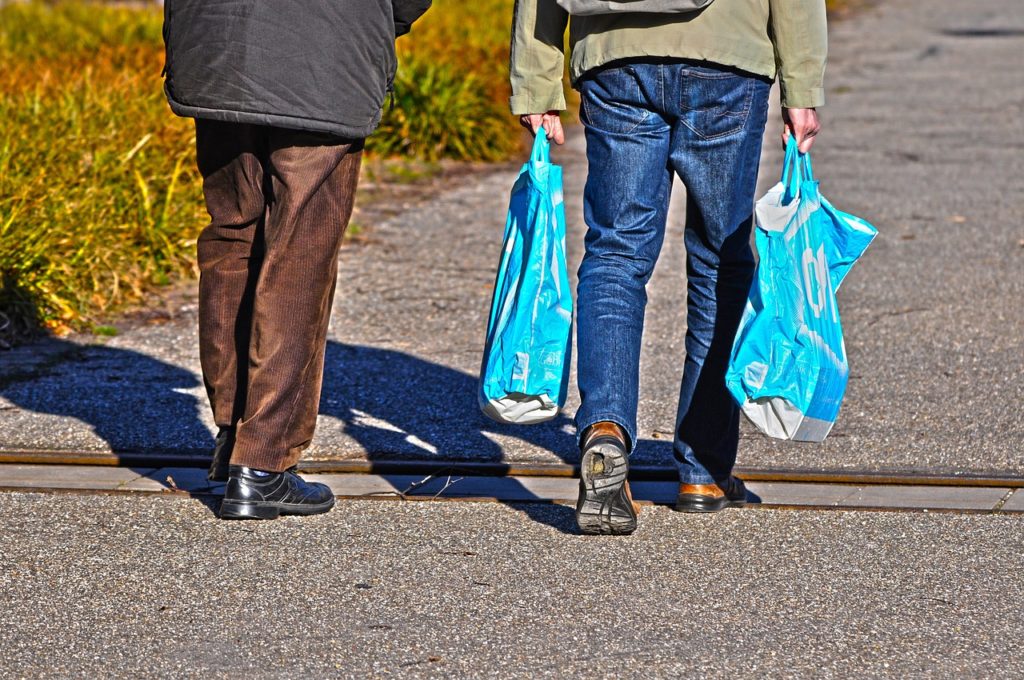Making Sustainable Choices in Everyday Life for a Positive Impact on the Environment, Climate, and Other Species
Hey, did you know that the choices you make in your everyday life can actually have a positive impact on the environment, climate, and other species? It’s true! From the products you buy to the way you use resources, there are so many ways to make a difference.
In this article, you’ll learn more about making sustainable choices in your daily life. We’ll explore simple steps you can take, like buying gently used products with minimal packaging and reducing plastic waste. We’ll also delve into bigger changes you can make, such as driving less and driving green, greening your home, and even considering the impact of your food choices. By the end, you’ll have a better understanding of how your choices matter and how you can be a part of positive change. So, let’s dive in and start making a difference together!

This image is property of pixabay.com.
9 Ways for Making Sustainable Choices in Everyday Life to have a Positive Impact on the Environment, Climate, and Other Species
Making sustainable choices in our everyday lives can have a positive impact on the environment, climate, and other species. By adopting simple practices and making conscious decisions, we can contribute to a healthier and more sustainable world.
Consider buying gently used products
When it comes to shopping, it is important to think twice before making a purchase. Instead of always buying new, consider buying gently used products. This not only helps reduce waste but also extends the lifespan of a product. Additionally, buying used items can often save you money.
Choose products with minimal packaging
Another way to make sustainable choices while shopping is by choosing products with minimal packaging. Excessive packaging contributes to unnecessary waste that ends up in landfills or even oceans. By opting for products with minimal packaging, you can reduce your carbon footprint and help preserve the environment.
Boycott products that endanger wildlife
As consumers, we have the power to influence companies and their practices. One way to make a difference is by boycotting products that endanger wildlife. This could include products made from or derived from endangered animals, such as ivory or certain types of fur. By refusing to support these industries, we send a message that the well-being of wildlife is important to us.
Support sustainable materials
When making purchasing decisions, choose products made from sustainable materials. Sustainable materials are those that can be replenished at a rate equal to or faster than they are consumed. Bamboo, for example, is a sustainable material that can be used to make a variety of products. By supporting sustainable materials, you can help promote environmentally-friendly practices in the manufacturing industry.
Choosing Environmentally-Friendly Products
Pay attention to labels
When shopping for products, pay attention to labels that indicate environmental friendliness or certifications. Look for labels that indicate a product is eco-friendly, sustainably sourced, or organic. These labels can help you choose products that minimize their impact on wildlife and the planet.
Choose shade-grown coffee
Coffee production can have negative environmental impacts, particularly when forests are cleared for sun-grown coffee plantations. By choosing shade-grown coffee, you can support coffee farms that maintain forest cover. Shade-grown coffee plantations provide habitat for birds and other wildlife, helping to preserve biodiversity.
Opt for organic food
Choosing organic food is not only beneficial for your health but also for the environment. Organic farming practices prioritize the use of natural fertilizers and pesticides, avoiding harmful chemicals that can pollute waterways and harm wildlife. Opting for organic food supports sustainable agricultural practices and reduces the demand for chemical-intensive farming.
Making Sustainable Choices for Reducing Plastic Waste
Use reusable bags
One of the most effective ways to reduce plastic waste is by using reusable bags. Instead of relying on single-use plastic bags for shopping, invest in a sturdy reusable bag that you can use repeatedly. By doing so, you help reduce the demand for plastic bags and decrease the amount of plastic that ends up in landfills or oceans.
Avoid single-use water bottles
Another significant source of plastic waste is single-use water bottles. Instead of buying bottled water, carry a reusable water bottle with you. Not only does this save money, but it also reduces the reliance on plastic bottles that pollute the environment.
Avoid products made from or packaged in plastic
To further reduce plastic waste, avoid purchasing products made from or packaged in plastic. Look for alternative materials that are more sustainable, such as glass, stainless steel, or cardboard. By choosing products that are plastic-free, you help reduce the demand for plastic production and contribute to a healthier planet.
Water Conservation and Wise Usage
Avoid bottled water
Choosing to avoid bottled water is not only beneficial for your wallet but also for the environment. The production, transportation, and disposal of plastic water bottles have a significant carbon footprint. Instead, opt for tap water or invest in a water filter to purify your own water at home.
Conserve water
Water is a precious resource, and it’s important to conserve it whenever possible. Simple practices like turning off the tap while brushing your teeth, fixing leaky faucets, and taking shorter showers can make a big difference. By being mindful of your water usage, you contribute to the conservation of this vital resource.
Use native plants in landscaping
When landscaping your yard or garden, consider using native plants. Native plants are better adapted to the local climate and require less water compared to non-native species. By incorporating native plants into your landscaping, you can conserve water and support local wildlife.
Making Sustainable Choices for Transportation
Walk, bike, carpool, or use public transportation
Choosing sustainable transportation options can greatly reduce your carbon footprint. Whenever possible, opt for walking, biking, carpooling, or using public transportation. These alternatives to driving alone in a car help reduce greenhouse gas emissions and decrease air pollution.
Perform regular car maintenance
If you rely on a car for transportation, it is essential to keep it in good shape. Regular car maintenance, such as keeping the tires properly inflated, changing the oil as recommended, and tuning up the engine, can improve fuel efficiency and reduce emissions. By taking care of your car, you contribute to a cleaner and more sustainable transportation system.
Making Sustainable Choices to make Your Home Energy Efficient
Improve energy efficiency through insulation
Proper insulation is crucial for energy efficiency in your home. By insulating your walls, roof, and floors, you can prevent heat loss in the winter and keep your home cooler in the summer. This reduces the need for heating and cooling, leading to lower energy consumption and reduced greenhouse gas emissions.
Install energy-saving windows
Energy-saving windows contribute to a more efficient home. Windows with double or triple glazing and low-emissivity glass can help maintain a comfortable temperature inside your home while reducing the need for excessive heating or cooling. This leads to energy savings and a reduced environmental impact.
Use programmable thermostats
A programmable thermostat allows you to control the temperature in your home more efficiently. You can set different temperatures for different times of the day, ensuring that you only use energy when necessary. By utilizing a programmable thermostat, you can reduce energy waste and decrease your carbon footprint.
Switch to energy-saving lightbulbs
Switching to energy-saving lightbulbs, such as LEDs or compact fluorescent lamps (CFLs), is a simple and effective way to save energy. These bulbs use significantly less electricity than traditional incandescent bulbs and have a longer lifespan. By making this switch, you not only save money on your energy bills but also contribute to environmental conservation.
Choosing Renewable Energy Sources
Use wind power
Using wind power as a source of energy can contribute to a sustainable future. If you have the means, consider installing wind turbines on your property or support wind energy projects in your community. Wind power is a clean and renewable energy source that helps reduce the reliance on fossil fuels.
Utilize solar power
Solar power is another renewable energy source that can be harnessed to reduce your carbon footprint. Installing solar panels on your roof or supporting solar energy initiatives can help generate clean and sustainable electricity. By utilizing solar power, you contribute to a more sustainable energy system and a greener future.
Reducing Meat Consumption and Food Waste
Reduce meat consumption
The meat industry has a significant impact on the environment, including deforestation, greenhouse gas emissions, and water pollution. By reducing your meat consumption, particularly red meat, you can help mitigate these environmental effects. Consider incorporating more plant-based meals into your diet and choosing sustainable protein sources like legumes and tofu.
Prevent food waste
Food waste is a major issue contributing to environmental degradation. To help combat food waste, plan your meals carefully, store food properly, and use leftovers creatively. By being mindful of food waste, you not only reduce your environmental impact but also save money and support sustainable agriculture.
Making Sustainable Choices by Family Planning
Have a smaller family to reduce resource demands
The size of our families can influence the demands we place on resources and the environment. By considering sustainable family planning and having a smaller family, we can reduce our carbon footprint and limit population growth. Supporting access to family planning options and reproductive health services can contribute to a more sustainable future.
Protect other species
Taking environmental protection a step further, consider how your choices impact other species on the planet. By making sustainable choices, supporting conservation efforts, and advocating for animal welfare, we can protect other species and preserve biodiversity for future generations.
Conclusion
Making sustainable choices in everyday life is vital for a positive impact on the environment, climate, and other species. Whether it’s through shopping and consumer choices, energy efficiency, transportation, or dietary decisions, every individual has the power to contribute to a healthier and more sustainable world. By being conscious of our choices and taking simple actions, we can collectively make a significant difference in preserving our precious planet. Remember to use your voice and vote to support candidates and policies that prioritize environmental protection and address issues like climate change and population growth. Let’s work together to create a sustainable future for all.
Check more ideas here at https://www.biologicaldiversity.org


